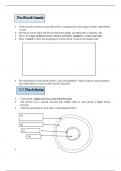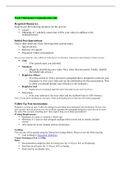Lecture notes
The human circulatory system and blood vessels
- Module
- Institution
This note offers a clear, concise breakdown which focuses and provides essential information of the circulatory system, focusing on the structure and function of the blood vessels - arteries, veins and capillaries. This also explains their role in transporting blood around the body.
[Show more]












